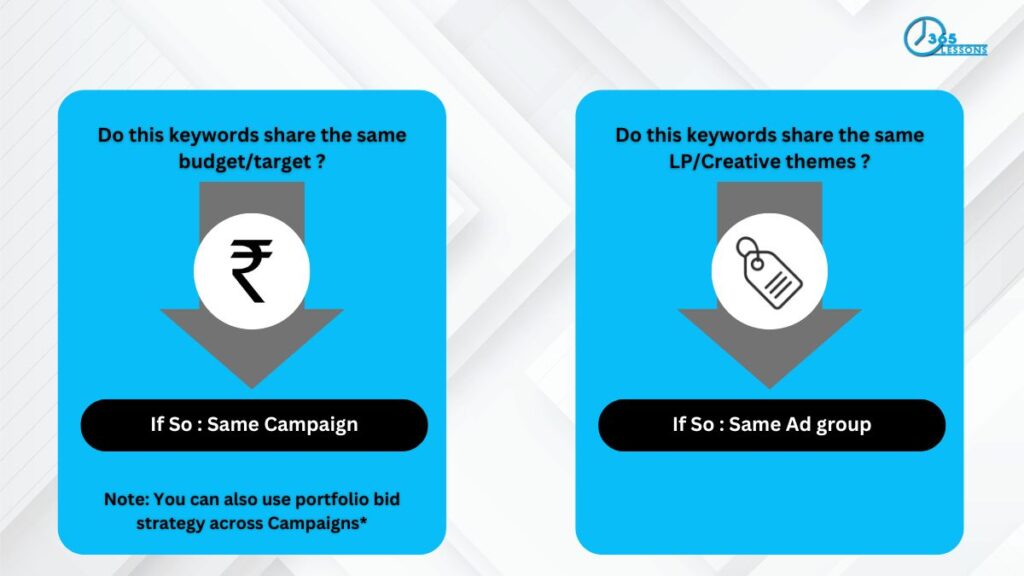To make your Google Ads work better with Google’s AI, here are some simple but effective tips:
Latest Google Ads Updates
Make Your Account Easier to Manage:
- Organize your ads smarter: Group your ads around specific themes instead of single keywords. This helps Google’s AI understand and optimize your ads better, leading to improved results, easier management, clearer insights, and fewer mistakes.
Table of Contents
Steps to Improve Your Ad Account:
- Group related ads together: Instead of having many ad groups for single keywords, combine them into groups based on themes. This helps the AI focus and improve conversions.
- Use one type of keyword match: Put all keyword match types in one group, and just use the broad match. This simplifies your account and lets broad match use its full potential to reach more relevant searches.
- Streamline and tidy up: Get rid of separate settings for different devices, and organize your campaigns by your main business goals. Also, clean out any keywords that aren’t being used or are duplicated.
Detailed Tips:
- Grouping ads: By organizing your ads into themes, Google’s AI can better select the most relevant ad for each search query. If keywords are aimed at the same goal or share creative themes, keep them in the same ad group or campaign.For example, reduce six ad groups down to three by consolidating similar themes.

- Keyword match types: Keeping different match types in one ad group and choosing broad match helps the AI work with more data and potentially increase your ad performance. Broad match is especially powerful because it uses all available signals to match with the right searches, unlike exact and phrase matches that are more limited.Statistically, 62% of advertisers who use AI bidding prefer broad match.
- Streamlining campaigns: Since Google’s AI considers the device type in its bidding strategy, there’s no need for you to segment your campaigns by device type. Instead, focus on your business goals. Removing clutter and redundancies from your account also makes it easier to manage.For instance, consolidate three separate campaigns into a single, more focused campaign.
By following these simple guidelines, you can make your Google Ads account more AI-friendly, leading to better performance and easier management.
FAQ: Simplifying Google Ads Account Structure
1. What is the benefit of organizing my ads into themed ad groups?
Organizing ads into themed groups helps Google’s AI understand and optimize your ads better, leading to more effective targeting and improved ad performance.
2. Why should I consolidate my keyword match types into one ad group?
Consolidating match types simplifies your account structure, making it easier for Google’s AI to utilize broad match capabilities fully, which can reach more relevant searches and improve performance.
3. How does streamlining campaigns by business objectives benefit me?
Focusing campaigns on business objectives rather than device segmentation allows for clearer goal alignment and simplifies management, enhancing the effectiveness of Smart Bidding strategies.
4. Can simplifying my account structure really improve AI efficiency?
Yes, a simpler account structure with themed ad groups allows Google’s AI to optimize more effectively towards your targets, potentially increasing your conversion rates.
5. What’s the advantage of using broad match over other match types?
Broad match uses all available signals to understand search intent, making it more effective at finding relevant matches that can lead to conversions, unlike exact and phrase matches that have more limitations.
6. How do I consolidate my ad groups effectively?
Group your keywords based on similar themes or objectives, combining single-keyword ad groups into broader themed ad groups to enhance AI optimization.
7. What should I do with duplicate or non-serving keywords?
Clean up your account by removing these keywords. This reduces clutter, making your account easier to manage and potentially improving your ad performance.
8. How does removing device segmentation impact my ad performance?
Removing device segmentation simplifies your account and allows Google’s Smart Bidding to take device type into account more effectively, without unnecessary complexity.
9. Is there a downside to having multiple match types in my account?
Having multiple match types without leveraging Smart Bidding can segment your data and potentially reduce the performance, as it prevents broad match from utilizing its full potential.
10. How often should I review my account structure for potential simplification?
Regularly reviewing your account structure for simplification opportunities can ensure it remains aligned with Google’s AI capabilities, ideally on a quarterly basis or whenever significant changes to your campaign objectives occur.
Key Takeaways:
- Theme-Based Organization: Group your ads into themed ad groups rather than individual keywords to improve AI optimization and performance.
- Consolidated Keyword Match Types: Combine all match types into a single ad group and use broad match to maximize AI’s potential in understanding and reaching relevant searches.
- Streamline Campaigns: Focus on business objectives rather than device segmentation to simplify management and leverage Smart Bidding more effectively.
- Enhanced AI Efficiency: Themed ad groups allow Google’s AI to optimize towards a single target more efficiently, increasing conversion opportunities.
- Simplified Account Management: Consolidating ad groups and campaigns leads to clearer trends, easier management, and fewer errors.
- Optimal Use of Broad Match: Broad match is the most flexible, utilizing all available signals for matching, unlike exact and phrase match, which are more restrictive.
- Improved Performance with Less Effort: By streamlining match types and ad group themes, advertisers can potentially see better results with less manual tweaking.
- Reduction of Unnecessary Complexity: Eliminating device segmentation and cleaning up duplicate or unused keywords simplifies the account structure.
- Smart Bidding Compatibility: The simplified and theme-oriented structure enhances compatibility with Smart Bidding, leading to better bid decisions by AI.
- Focus on Business Goals: By reorganizing campaigns based on business objectives, advertisers can ensure their ad spend is aligned with their main priorities, leading to more strategic campaign management.